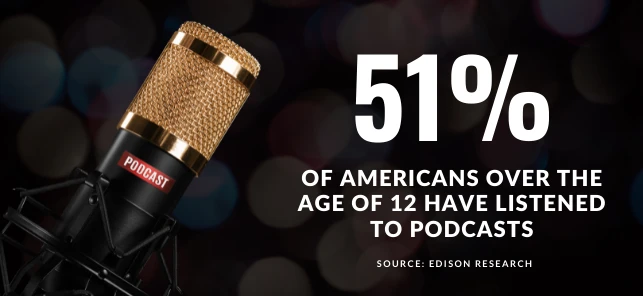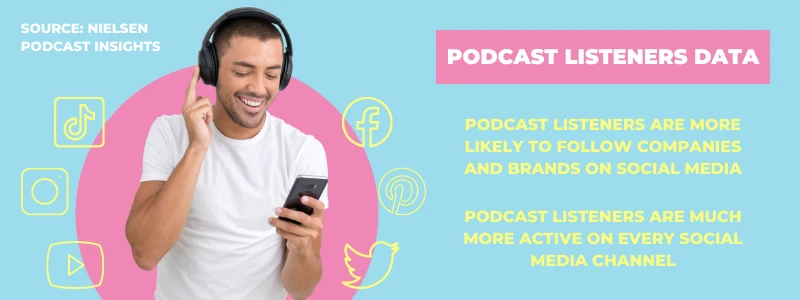Content repurposing is a powerful technique that involves taking existing content and transforming it into new formats, to reach a wider audience and achieve greater impact. Repurposing content has many benefits, including saving time, increasing the ROI of a podcast, and improving brand visibility.
The benefits of content repurposing are clear – by creating new content from existing assets, you can reduce the time and effort required to produce fresh content. Rather than starting from scratch every time, you can leverage the work that has already been done and use it to create new and engaging content for your podcast. This can be especially valuable for busy podcasters who struggle to find the time and resources to create new content regularly.
In addition to saving time, content repurposing can also help to increase the ROI of a podcast. By creating content in different formats, you can reach new audiences and attract more listeners to your podcast. For example, you can turn a podcast episode into a blog post or create social media posts based on the content of your podcast. By doing so, you can increase your brand visibility, attract new listeners, and ultimately improve the ROI of your podcast.
Overall, content repurposing is a valuable tool for podcasters looking to save time and increase their ROI. By leveraging existing content and creating new formats, you can reach a wider audience, improve your brand visibility, and achieve greater impact with your podcast.
But there’s a catch when it comes to content repurposing for your podcast – it’s a one way street, only!
Why Content Repurposing Is A Podcast ROI Killer

While content repurposing can be a powerful tool for podcasters, it can also be a double-edged sword.
When done improperly, content repurposing will harm the ROI of a podcast. How? Most people make some very common mistakes when repurposing for a podcast, like not adapting it to different platforms or audiences, which dilutes its impact and ultimately drive away listeners.
One of the main reasons why content repurposing can harm the ROI of a podcast is that it often leads to a lack of originality. When the same content is repurposed repeatedly, listeners can quickly become bored and lose interest in the podcast. This can lead to a decrease in listeners and ultimately a reduction in ROI as your podcast hemorrhages audience engagement.
Another common mistake made when repurposing content is not adapting it to different platforms or audiences. Each platform has its own unique requirements and audience demographics, and content must be adapted accordingly to maximize its impact. For example, a podcast episode may not be suitable for a blog post, and vice versa. Similarly, content intended for a specific audience may not resonate with a different audience.
When content is not adapted to different platforms or audiences, it can appear disjointed and unprofessional. This can lead to a loss of credibility and trust among listeners, which can ultimately harm the ROI of a podcast.
Podcasting requires a clear strategy and purpose. A podcast has a specific audience that listens for specific reasons. When content is repurposed haphazardly, without a clear goal or plan, it can lead to confusion among listeners and a lack of direction for the podcast.
Content repurposing can be a powerful tool for podcasters, provided you’re aware of its potential pitfalls. By avoiding common mistakes such as a lack of originality, failure to adapt content to different platforms or audiences, and a lack of strategy or purpose, podcasters can ensure that content repurposing enhances, rather than harms, the ROI of their podcast.

How to Avoid Killing Your Podcast ROI with Content Repurposing
To avoid killing your podcast ROI with content repurposing, it is important to approach it strategically and with purpose.
Here are some tips, five to be exact, for avoiding common mistakes and adapting your content to different platforms and audiences for maximum impact and ROI:
1. Have a clear goal and plan!
Before repurposing your content, identify your goals and have a clear plan in place. Determine which platforms and audiences you want to target, and what types of content will resonate with them.
Suppose you want to repurpose a podcast episode into a blog post. First, identify your goal – do you want to increase website traffic, generate leads, or establish thought leadership? Next, create a plan that outlines how you will adapt the content for the blog format, including identifying key takeaways and structuring the content in a way that is easy to read.
2. Repurpose with originality.
While repurposing content is about leveraging existing content, it should also be done with originality. Consider how you can add value to the content or create a fresh take on it to keep it interesting for listeners.
Let’s say you want to repurpose a podcast episode on the benefits of meditation into a video for social media. Instead of simply using the audio and adding images, consider creating a visually engaging animation or using different camera angles to create a unique viewing experience.
3. Adapt to different platforms.
Each platform has its own unique requirements and audience demographics. When repurposing content, adapt it accordingly to maximize its impact. For example, a podcast episode may need to be summarized or restructured to work as a blog post.
Suppose you want to repurpose a podcast episode on the latest industry trends into a LinkedIn article. To adapt the content, you may need to summarize the key takeaways and structure the content in a way that is appropriate for the platform. For example, LinkedIn articles tend to be more professionally focused and may require a more formal tone.
4. Consider the audience.
When repurposing content, consider the audience you are targeting. Ensure that the tone and style of the content is appropriate for the platform and audience. For example, content intended for a professional audience may require a different tone than content intended for a casual audience.
Let’s say you want to repurpose a podcast episode on the latest pop culture trends into a newsletter for a teen audience. In this case, the tone and style of the content should be adapted to appeal to a younger audience. This may involve using more informal language and incorporating relevant pop culture references.
5. Be consistent.
Consistency is key to maintaining a loyal listener base. When repurposing content, ensure that your messaging and branding remain consistent across all platforms.
Suppose you want to repurpose a podcast episode into a blog post and social media content. To maintain consistency, ensure that the messaging and branding remain consistent across all platforms. Use the same colors, fonts, and imagery to create a cohesive brand identity.
By following these tips, you can avoid common mistakes and adapt your content to different platforms and audiences for maximum impact and ROI.
Remember, the key to successful content repurposing is to approach it strategically and purposefully.
With the right approach, content repurposing can be a valuable tool for enhancing the ROI of your podcast.

Let's Review
In conclusion, content repurposing can be a powerful tool for increasing the reach and ROI of your podcast, but you should never repurpose your content that your audience has likely already consumed into a podcast. Repurposing with podcasts only works one way!
After all, your audience likely read your tweets and blog articles, so don’t think you can get away with repurposing those into your next podcast and keep your listeners engaged!
But by adapting your content to different platforms and audiences, you can create a diverse range of content that resonates with your target audience.
You must avoid common mistakes that can harm your podcast ROI, such as failing to adapt content to different platforms or audiences, and repurposing content without considering the originality or value-add of the new format.
To avoid these mistakes and maximize your podcast ROI, here are some actionable steps you can take:
- Set clear goals and plan your content repurposing strategy accordingly.
- Focus on creating original, visually engaging content that adds value for your target audience.
- Adapt your content to different platforms and audiences to ensure maximum impact.
- Consider the tone, style, and language of your repurposed content to ensure it resonates with your target audience.
- Maintain consistency across all platforms to create a cohesive brand identity.
By following these steps, you can avoid the pitfalls of content repurposing and create a successful podcast with a high ROI.
Remember, content repurposing is not just about recycling old content – it’s about creating new, valuable content that resonates with your target audience and drives business results.
You create this new content on your podcast and then repurpose it everywhere else to drive more listeners to your podcast!





